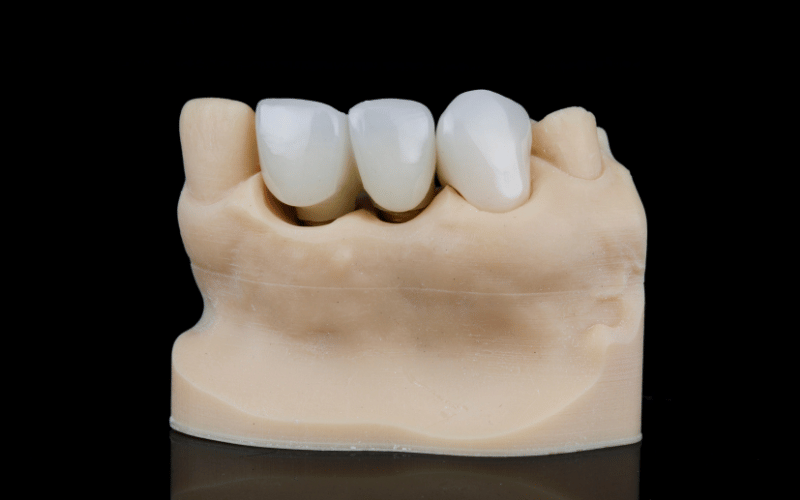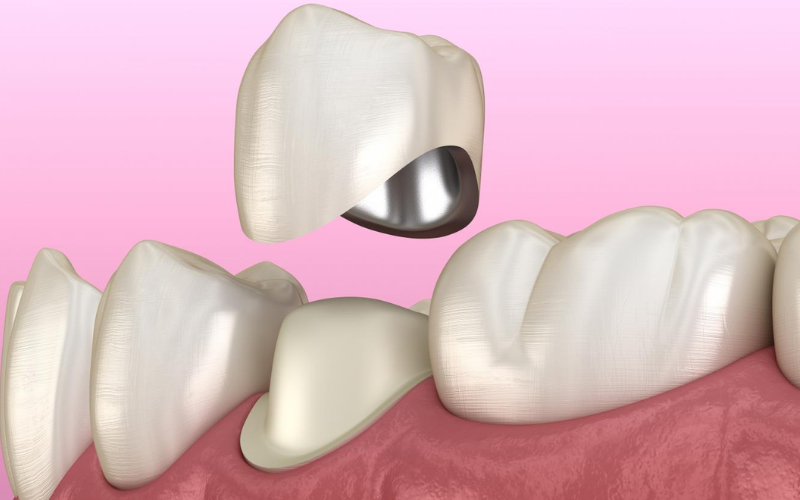1520 Green Oak Place, Suite B Kingwood, Tx 77339
How Does A Dentist Remove A Dental Crown?

A dental crown is a cap-like structure made of various materials, including metal, porcelain, or a combination, placed over a damaged or weakened tooth. Its purpose is to restore the tooth’s shape, size, strength, and appearance while improving its functionality.
Crowns are commonly used to protect and support teeth with large cavities, fractures, or following root canal treatment. However, can a dental crown be removed?
Yes, a dentist can remove dental crowns if necessary. However, it typically requires professional tools and expertise to extract them safely without damaging the underlying tooth structure.
Reasons for Removing a Dental Crown
1. Decay: If decay develops around the margins of the crown or underneath it, removal may be necessary to address the underlying issue and prevent further damage to the tooth.
2. Damage: Crowns can chip, crack, or become damaged due to trauma or wear over time. In such cases, removal may be required to replace the damaged crown and restore tooth integrity.
3. Poor Fit: If a crown no longer fits properly, it may cause discomfort, bite problems, or gum irritation. Removing and replacing the ill-fitting crown can improve oral health and restore functionality.
4. Aesthetics: Patients may want to replace a crown for cosmetic reasons, such as to better match the color or shape of surrounding teeth.
5. Underlying Issues: A dentist may need to remove a crown to address underlying issues, such as recurrent infection or inflammation in the tooth or surrounding tissues.
The Procedure for Removing a Dental Crown
1. Assessment: The dentist begins by examining the crown and the surrounding teeth to determine the best approach for removal. X-rays may be taken to assess the condition of the underlying tooth structure.
2. Anesthesia: Local anesthesia is usually administered to numb the area around the tooth with the crown to ensure patient comfort.
3. Crown Removal: The dentist carefully cuts through the dental cement or adhesive that holds the crown in place using specialized dental tools, such as a dental drill or crown remover. This process may require time and precision to avoid damaging the underlying tooth structure.
4. Gentle Extraction: The dentist gently removes the crown from the tooth once the crown is loosened. Sometimes, the crown may need to be fractured or sectioned to facilitate removal without harming the tooth.
5. Tooth Examination: After removing the crown, the dentist examines the underlying tooth for any signs of decay, damage, or other issues that may require treatment.
6. Temporary Protection: If the underlying tooth is healthy and a new crown is planned, the dentist may place a temporary crown or protective covering to safeguard the tooth until the permanent restoration can be fabricated.
7. Final Restoration: Depending on the findings during the examination, the dentist may recommend additional treatments, such as dental fillings or root canal therapy, before placing a new crown or alternative restoration.
Wrap Up!
In conclusion, removing a dental crown is a safe procedure when performed by a skilled dentist. While the process involves careful manipulation and precision, modern dental techniques and equipment ensure minimal patient discomfort and risk.
It’s crucial to emphasize the importance of consulting a dentist for crown-related concerns. Whether it’s addressing decay, damage, poor fit, or aesthetic preferences, a dental professional can provide tailored solutions and ensure your teeth’ optimal health and functionality.
Don’t hesitate to schedule an appointment with your dentist today for any crown-related concerns and ensure a healthy, confident smile for years to come!






